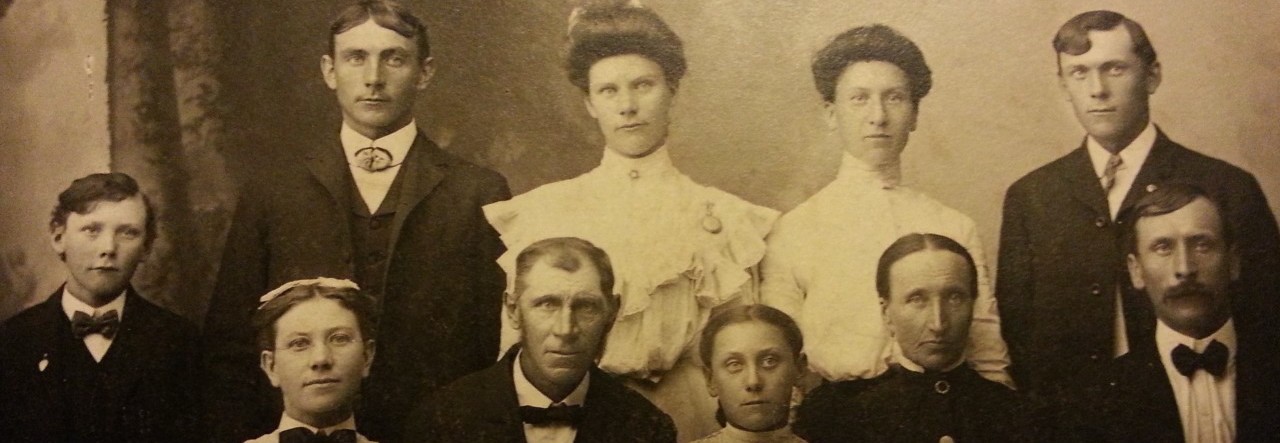I’ll admit, I wasn’t big on Twitter when it first came out. I could not see the allure of posting what I thought was pretty much a status update. I was sure such a thing would fade away.
I am not the one to listen to when it comes to predicating the future of technology apparently!
I gave in and joined Twitter back in 2010 and didn’t really use it for much until these last couple of years when I began to use it for genealogy. I personally use it to post my website blog postings and I follow many other genealogists as well as archives and historical societies. It is where I will get some of my news for my Friday posts in fact.
So what can you do on Twitter while looking for genealogy?
You can…
- Find genealogists and genealogy blogs (like this one!)
- See what’s new using #genealogy (you can save this search too so you can come back to whenever you want – you’ll find your saved searches when you click on the search Twitter box)
- Follow genealogy organizations in your areas of interest
- Follow the genealogy companies you use to know about new things coming to the website (and sales!)
- Follow events you are attending. Usually conferences will have a specific hashtag for their event so you can follow the hashtag to see what’s going on.
My favorite part of Twitter is keeping up with genealogy information. I don’t spend hours on Twitter (although I know that’s easy to do once you get started) but I will go through who I follow and see what’s new.
Who to follow?
Here are some recommendations (besides myself, of course):
Bloggers/Genealogists
- @LorineMS – Olive Tree Genealogy – Check out her website if you haven’t yet! Lots of great information there.
- @dickeastman Dick Eastman, author of Eastman’s Online Genealogy Newsletter – a lot of great information there!
- @megansmolenyak – Megan Smolenyak – Knwon for her book Who Do You Think You Are (one of my favorites by the way) as well as part of several genealogy TV shows
- @rjseaver – Randy Seaver – Author of geneamusings.com, a favorite blog of mine
- @kidmiff – AnceStories – wonderful blog and information!
- @legalgen – Judy G. Russell, aka The Legal Genealogist
- @CeCeMoore – CeCe Moore, aka Your Genetic Genealogist
- @AmyJohnsonCrow – Amy Johnson Crow from her own blog and No Story Too Small
- @GenealogyLadyCA – Deborah Sweeney from Genealogy Lady (check out her World War II letters!)
- @ancestryjourney – Jen Baldwin from Ancestral Journey
- @LisaCooke – Lisa Louise Cooke from GenealogyGems
- @CristaCowan – Crista Cowan, aka The Barefoot Genealogist from Ancestry.com
- @YSGenealogists – The Young and Savvy Genealogists
- @ClueWagon – Kerry Scott from Clue Wagon
- @cataplin – Cari Taplin from GenealogyPANTS: Who wears the PANTS in your family?
There are more but my list will just keep getting longer… I follow a number of people on my Twitter so if you’re really curious, go here.
Genealogy Organizations/Archives/Historical Societies, etc.
- @genealogybank – Genealogy Bank – known for their newspaper databases
- @USNatArchives – The US National Archives
- @23andMe – The DNA testing company 23andMe
- @FamilyTreeMag – Family Tree Magazine
- @findmypastUS – Find My Past
- @ngsgenealogy – The National Genealogical Society
- @FamilySearch – FamilySearch.org
- @ancestry – Ancestry.com
- @GeneaBlogTRIBE – GeneaBlog Tribe
- @SmithsonianArch – Smithsonian Archives
- @FGSgenealogy – The Federation of Genealogical Societies
- @seekingmichigan – Michigan Historical Center (seekingmichigan.org)
- @indepthgen – In-Depth Genealogist
And more… There are Twitter accounts for many archives, historical societies, and groups around the world. Seek and you shall (hopefully) find!
If you believe I left off an essential Twitter account(s) to follow, please leave it in the comment section below!
Happy Hunting!






